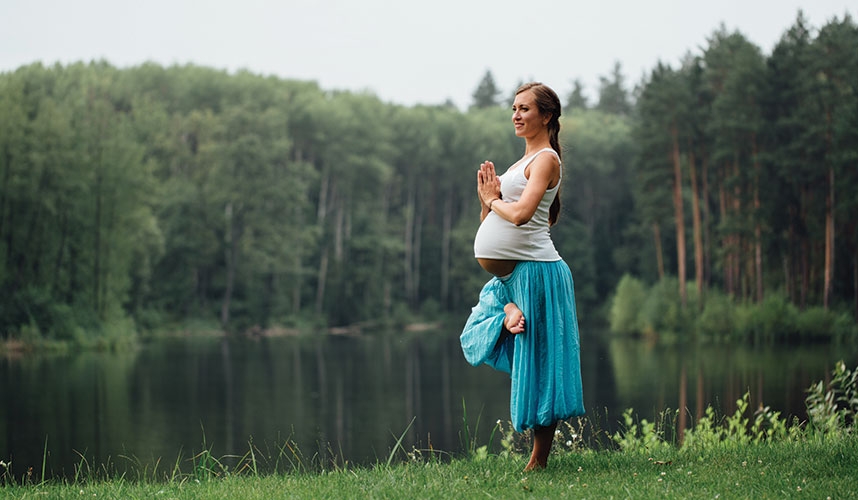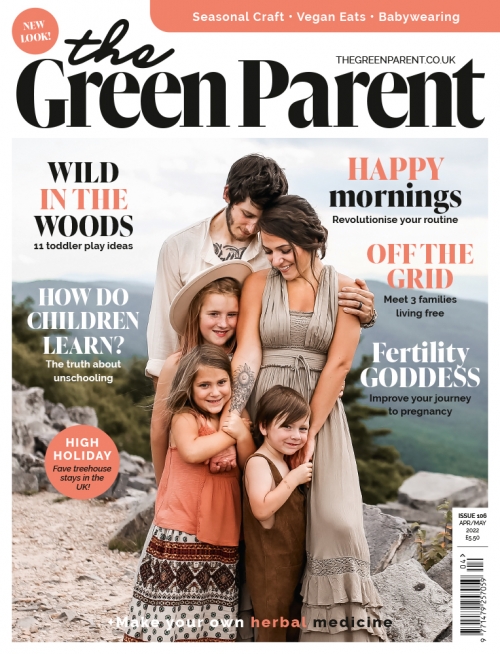The most important person during labour is your baby. She is just as much a part of the process as you are, and may even be the one who chooses when to start labour off; babies do generally come when they are ready. Just as labour is different for different mothers, so, too, is it different for different babies. Some seem to love staying on in the womb and are reluctant to come into the world, but others can’t wait to be born.
It is worth spending a little time focusing on how labour might be from your baby’s perspective. You can spend time preparing for labour, but your baby is launched into it. While you are releasing endorphins, your baby is releasing adrenaline. Labour, therefore, is quite stressful for your baby, but it is a stress with which she is designed to cope. In fact, some people believe that labour may be a good preparation for how to deal with stress in life.
Years ago, some psychologists believed that labour was too stressful for babies and they should all be born by Caesarean section. Now they have realised that a C-section is not something babies are naturally designed to go through, and it actually may create more stress than a straightforward vaginal birth. Babies can be helped to process the stress of a C-section, but parents do need to be aware that their babies may need a little extra support to make the adjustment to life outside the womb.
That is not to say that babies can’t get over- stressed during a vaginal delivery. There is a fine balance and if the labour is particularly long, or the baby gets stuck, or the cord is wrapped around her neck so that she is not getting enough blood, then the stress can become too much and is known as “fetal distress” or “compromise”. This can be a reason for having to deliver the baby immediately by C-section or forceps. In such situations, it is important to try not to add to the stress that your baby experiences by being stressed yourself. Whatever happens, relaxation must always remain a high priority.
What your baby “knows”
You have to remember that by the time she is ready to be born, a baby is a very aware being – although opinion differs on how aware and when that awareness comes.
By the time of birth, a baby has been aware of touch since week eight, sound since week 22, and light since week 30. It is interesting that touch is the earliest sense that develops. The baby has learned to be aware of feelings of being touched from the inside (by the womb contracting or the movement of the mother’s intestines) and also from the outside (through the touch of the mother on her abdomen).
Your baby is also aware, in her own way, of everything that you do. Hormones in the mother do pass through to the baby, so if you feel stressed in labour, you will add to your baby’s stress. If, on the other hand, you are relaxed, your baby will be more relaxed.
Keeping in touch
Labour is a complete unknown for your baby, as well as for you. If you have been talking to and massaging your baby during pregnancy, then it is good to continue doing that throughout labour, if possible, because it offers your baby reassurance and familiarity.
You or your partner could communicate with your baby by touching or massaging your abdomen. If you played music that made you feel relaxed while you were pregnant, your baby will also have felt relaxed. Playing the same kind of music in labour, and even after the birth, will help both you and your baby to relax.
It is never too late to have a name for your baby while she is in your womb. You can use this name to talk to her while you are pregnant and continue using it in labour. It could be the name that you are intending to call your baby, but it also could be a “womb name”. I called my daughter “Little Fishy” and my son “Cherry Berry”. Sometimes people worry that such a name might stick, but when you meet your baby, you will find her new name. In our family, the womb names haven’t been used since the first few weeks, although we sometimes fondly remember them! However, sometimes womb names feel appropriate and so you may keep on using them.
In the last few weeks of your pregnancy, you can write a journal to your baby about the experience of birth. You can explore what you are going to do to support her during the process of labour. You also can talk to her about this while you are massaging your abdomen.
You can continue to communicate with your baby throughout labour. In fact, by cutting off from your baby, you may make labour more difficult for her. You can focus on or even talk to your baby while you are having a contraction. If things do get more difficult, you can talk to your baby about what is happening. Many mothers find focusing on something positive, such as their baby, rather than something negative such as the pain, can really help them have a more positive attitude to the birth.
MORE INSPIRATION
READ Beautiful Birth: Practical Techniques to Help you Enjoy your Birth by Suzanne
LEARN Take the online course at wellmother.org/course/beautiful-birth/
Exercise: connecting with your baby
This simple relaxation exercise will help you to become attuned to your womb and connect with your baby.
- Find a place where you can sit comfortably. Focus on your breathing, and with each out breath allow your breathing to become deeper and your body to feel more relaxed. Close your eyes, if you wish, and focus your mind on your womb. Be aware of your womb as a space; envisage a subtle light within it and be aware of its colour. Breathe gently, resting all your attention in your womb. Sense each breath going to its centre, bringing with it more light. Let each out breath take with it any doubts or anxieties you have about your labour.
- Your womb will gradually become free of tension, allowing you to hear your baby. Let your breath go in and out and, as it does, ask your baby to speak to you. For the next few minutes, sit and listen. Your baby will begin to release emotions, thoughts and dreams. You may feel your breathing change. Let go of any fears or anxieties you may have about labour. If negative emotions appear, simply tell yourself that they are leaving you easily and comfortably. If voices of doubt start to surface, gently tell them to leave. As you continue, allow your womb to reveal itself as safe and warm. Once you feel a sense of peace and connection, allow yourself and your baby to be in this relaxed space for as long as you need.
- When you are ready to ease out of your relaxation, gradually become aware of the movement of your breath out and in, and of the room around you. Eventually, on an out breath, allow your eyes to open.
Exercise: ready for birth
This visualization exercise helps your baby to anticipate birth. Please do this only in the last few weeks of your pregnancy, because you don’t want to focus your baby on her birth before she is ready, unless you are preparing for a premature labour.
- Find a comfortable position in which to relax, either sitting or lying, and close your eyes. Breathe slowly out and in and follow the pattern of your breathing. With each out breath allow your breath to deepen, let yourself become more relaxed, feel your abdominal muscles gently drawing in and become more aware of the baby in your womb.
- As you breathe out, be aware of how your baby is now – safely growing inside your body, inside your womb’s watery environment. Notice whether your baby’s body is moving around, or is still. Think how it must be for your baby in your womb, hearing the sound of your heartbeat. Be aware that she never feels cold or hungry and sleeps when she feels like it.
- Now tell your baby that she is going to remain physically in this safe space, but you are going to take her on an imaginary journey into the future. She is going to travel outside your body to her new home. You imagine the progress of this journey from her point of view.
- The walls of your home are tightening and squeezing your body. You feel squashed and new sensations flood you. Everything seems to slow down for a few moments. Then the tightening gradually subsides and you begin to feel familiarity again – the sound of your mother’s beating heart, her voice and other voices around, maybe music and singing which you have heard before. You begin to feel comfortable again and start to relax. Then the uncomfortable feeling of being squashed begins to happen again. You feel as though you are being pushed out, being dragged out of your safe, comfortable space. You are not sure what you are feeling. Maybe there is something new and exciting beyond the walls of your womb world? Maybe there is something scary out there? You are not sure, yet you feel yourself gradually being pushed out. Are you ready for this to happen? As you are slowly being squeezed out of your home, you feel doubt. Sometimes you get stuck and are unsure whether you can move forward or not. It’s like you are going down a long narrow tunnel. Your whole body is being squeezed from all sides.
- Eventually, you feel your head being squashed even more but then the pressure starts to ease and you feel some new sensations. Your body starts to twist and turn, and all of a sudden you are in a huge space. You are in another world outside your womb. Is it cold? noisy? bright? Suddenly you are enveloped in warmth, can hear that familiar heartbeat – louder now – and have an overwhelming urge to find nourishment.
- After taking your baby on her imaginary journey, slowly begin to focus on your own breathing and become aware of the present moment, with your baby safely inside your womb. Take notice of her in this moment. How is she moving? Is she kicking around or being still? You may even want to talk to her for a few moments and reassure her that the real journey has not yet begun. Be aware of your breathing and follow the movement of your breath as you breathe out and in. Be aware of the way you are sitting or lying and of the space in which you are resting. On an out breath, open your eyes.







